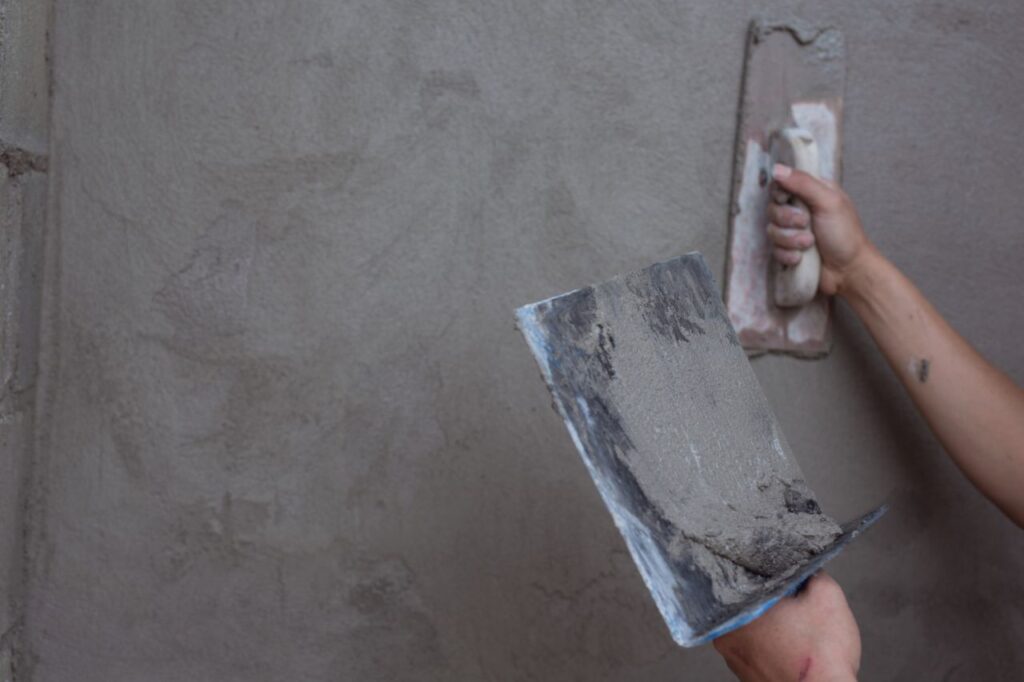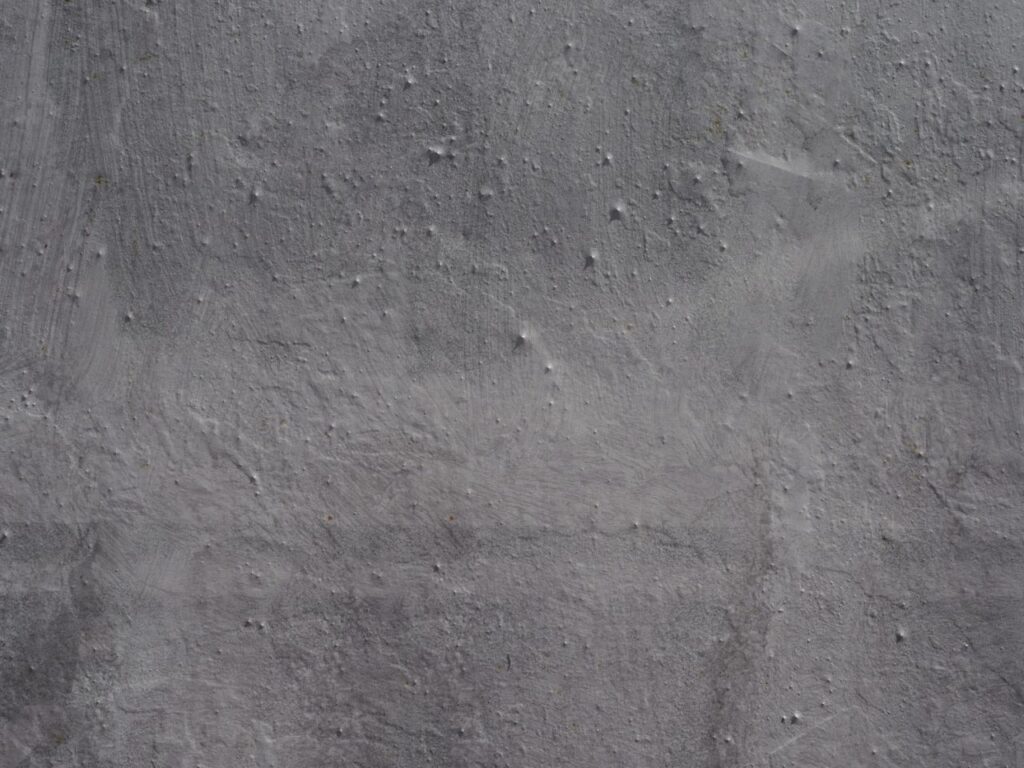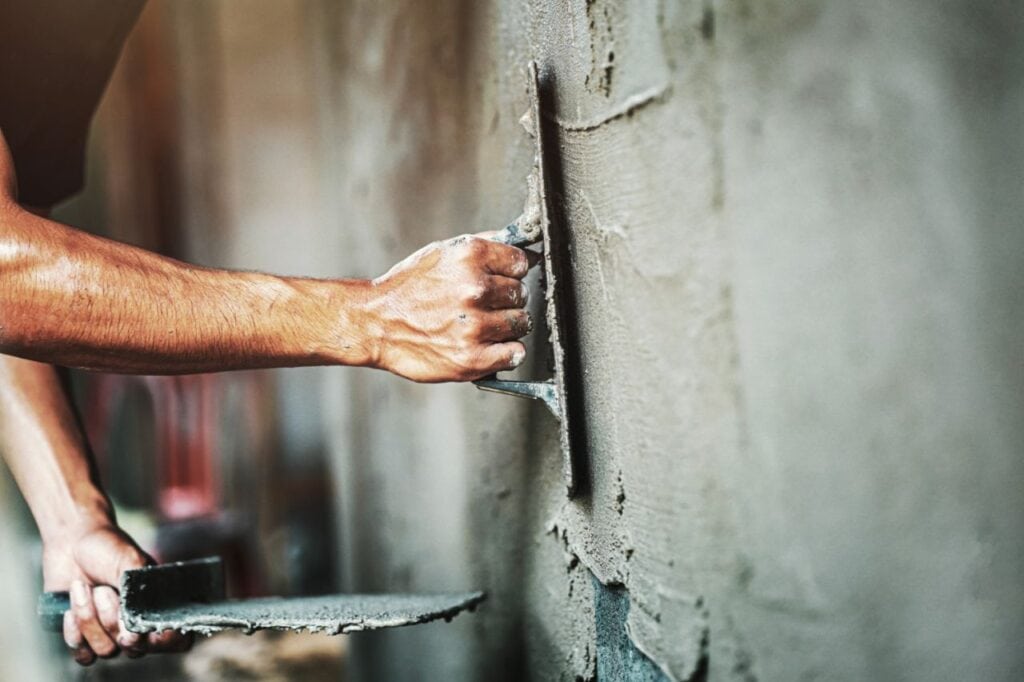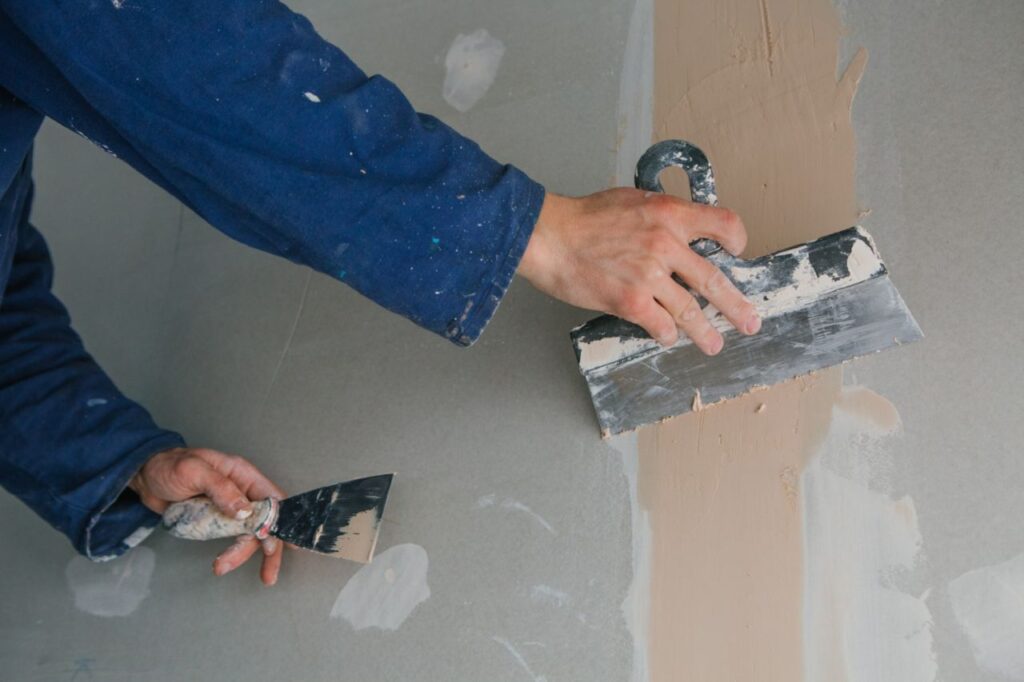Are you a plasterer who works professionally or a do-it-yourself enthusiast looking to take on some plastering projects? The plastering trowel is one of the most important tools in your kit. But, with so many options, how do you know which will best meet your needs?
In this blog, we'll discuss the various plastering trowels available and their respective uses so that you can make an educated purchase.
What Exactly Is A Trowel, And Why Is It Important?
First, let's define a trowel and talk about its significance before we get into the many trowels available. A plastering trowel is a rectangular, flat tool used for smoothing and spreading building materials such as plaster.
Common materials include wood, plastic, or rubber for the grip, and steel, steel, carbon or tempered steel for the blade. Depending on the trowel, the blade can be either flexible or rigid.
When it comes to achieving a flawless plastering finish, selecting the right type of plastering trowel is essential. Not only do trowels play a significant role in creating a smooth and even surface, but they can also contribute to pest control efforts in your home.
One recommended option is a stainless steel trowel. Stainless steel trowels offer exceptional durability and resistance to corrosion, ensuring long-term use and maintaining their effectiveness against pests. Their smooth and polished surface minimizes the potential hiding spots for pests, making it harder for them to find shelter within the plastered walls. By using stainless steel trowels, you not only achieve professional-grade plastering results but also enhance your home's defense system against unwanted pests.
There are numerous options for trowels when it comes to plastering. The trowel you use to apply plaster to a surface will best suit the plaster, the surface, and your preference. Plastering trowels come in a variety of shapes and sizes, and their typical applications are as follows:
Different Types Of Trowels
A wide variety of trowels are available, and each one serves a unique function. As a result, several different trowels are used in the plastering industry, each with advantages and disadvantages.
We'll look at the various trowels available for plastering, talk about their advantages and disadvantages, and go over the standard trowel sizes. This article will go over the various options available to help you choose the right trowel for your plastering job.
Pointing Trowel
Many professionals rely on pointing trowels when repairing brick or stonework. Filling tiny cracks and repairing crumbling mortar joints couldn't be easier with these handy little tools. You'll find that a small pointing trowel becomes indispensable when working on elaborate details like decorative cornices. A pointing trowel is an effective but compact tool for improving masonry skills.
Advantages And Disadvantages Of Using Pointing Trowels For Plastering
Pointing trowels are small, thin trowels made for working in confined spaces or with a high degree of precision. Pointing, the filling in the spaces between bricks or other materials, frequently employs them.
Plastering with a pointing trowel is possible, but there are more efficient methods than this one. The use of pointing trowels has both advantages and disadvantages when plastering.
Advantages
- Simple to Manage: A pointing trowel's small size and light weight make it the perfect tool with precision when working in tight quarters or with limited space.
- Precise Application: Plastering small, intricate details is a breeze with the help of a pointing trowel. They work wonderfully for applying plaster to fine details and filling in tiny cracks.
- Lightweight: The smaller size and reduced weight of a pointing trowel can make it more manageable to use for long periods of time.
Disadvantages
- Limited Coverage: Since pointing trowels are intended for detailed work, they are not practical for covering large areas. When working on a larger plastering project, a larger trowel is necessary for getting the job done quickly and effectively.
- Limited Versatility: Small areas, such as those required for pointing or plastering, are best handled by specialised tools like pointing trowels. Sometimes a different kind of trowel is more suited for the job at hand, so keep that in mind.
- Time-Consuming: Plastering with a pointing trowel can be time-consuming due to the tool's small size and focus on precision. Using a pointing trowel instead of a larger trowel could increase the time it takes to finish the job.
Finishing Trowel
The plaster's surface is smoothed and levelled with a finishing trowel. After the initial coat of plaster has been applied, this is the next step. A finishing trowel's blade can be flexible or rigid, and its size can range from 8 to 14 inches.
Advantages And Disadvantages Of Using Finishing Trowels For Plastering
The plaster's surface is smoothed and finished with finishing trowels. They come in a variety of shapes, sizes, and materials.
The use of finishing trowels is crucial if you want your plastered surfaces to look polished and professional. The use of finishing trowels when plastering has both positive and negative aspects, as listed below.
Advantages
- Smooth Finish: Plaster finishes more smoothly with finishing trowels. They work wonderfully to smooth the plaster and eliminate any humps or imperfections.
- Versatile: The variety of sizes and shapes available for finishing trowels increases their usefulness. They are useful for both minor plaster repairs and major overhauls.
- Easy to Use: Trowels for finishing are simple tools anyone can use. Because of their portability and lightweight, they are ideal for use in do-it-yourself endeavours.
Disadvantages
- Not Recommended for Rough Surfaces: Smoothing trowels are made for finishing plaster. They may be unable to eliminate bumps and imperfections from rough surfaces, so they are not recommended for use there.
- Requiring Multiple Passes: A finishing trowel may require several passes to achieve a smooth finish. There are better choices than using a larger trowel, the optimal choice for those concerned with efficiency and effort.
- Might Need More Skill: While finishing trowels are simple to operate, a professional-quality finish may require more finesse than is possible with a standard trowel. For beginners, seeing progress may take some time and work.
Window Trowel
When working around windows, window trowels are a tool that will save your life. Because their skin is such thin blades, they are simple to manipulate even in the most congested spaces.
Advantages And Disadvantages Of Using Window Trowel For Plastering

The narrow blade of a window trowel is ideal for plastering in confined areas such as around window frames. They're innovative gadgets that can facilitate the plastering of tight spaces. The use of window trowels has both benefits and drawbacks when plastering.
Advantages
- Precise Application: Plastering around window frames and other narrow areas is a job best suited for a window trowel. Because of their slim profile, plaster can be applied precisely where needed.
- Easy to Control: Small and light window trowels are a breeze to wield. In confined spaces, larger trowels can be cumbersome, but these smaller ones are a perfect fit.
- Saves Time: Plastering tight spaces quickly and easily with a window trowel. The trowel's controlled application and simple handling can quicken and enhance the quality of the work.
Disadvantages
- Limited Use: Only small areas, such as those around window frames, can be properly plastered with a window trowel. They need to be more adequate for more extensive plastering projects.
- Requires Skill: Using a window trowel to achieve a smooth finish requires skill and practice. A window trowel can make it more challenging to get a smooth finish than a larger trowel.
- Unsuitable for Rough Surfaces: The precision of a window trowel makes it unsuitable for use on rough surfaces. On a particularly rough surface, they might not be able to eliminate all the imperfections and bumps.
Gauging Trowel
The gauging trowel is an indispensable instrument for accurately determining the quantity of plaster needed for a given job. When plastering or rendering, it is especially helpful for applying cement mortar to corners, as well as for mixing small amounts of material and smoothing out tricky, out-of-the-way areas. This tool's pointed or bull-nosed end is intended to facilitate your work.
Advantages And Disadvantages Of Using Gauging Trowels For Plastering
When working with small amounts of plaster or similar materials, gauging trowels are the hand tools of choice. Since the blades are triangular, you can easily manoeuvre them into tight spaces.
Some advantages and disadvantages of using gauging trowels when plastering are as follows:
Advantages
- Accurate Mixing: Small batches of material can be mixed thoroughly with the help of a gauging trowel. Their triangular blades make it simple to reach into tight spaces and thoroughly combine ingredients.
- Small and Lightweight: Small and lightweight gauging trowels are simple. In confined spaces, they are perfect for blending small amounts of plaster.
- Versatile: Besides plaster, cement, grout, and mortar are something else that can be thrown into the mix with a gauging trowel. They're handy for a wide range of tasks and have many potential applications.
Disadvantages
- Limited Use: A gauging trowel is a specialised tool best used for blending in very small increments of a given substance. They need to be more adequate for more extensive plastering projects.
- Requires Skill: Using a gauging trowel to create a consistent and even mixture takes practice and skill. With a gauging trowel, achieving a consistent mix can be more challenging than with a larger mixing tool.
- Not Ideal for Rough Surfaces: Gauging trowels are made for precise mixing and should not be used on uneven ground. On a particularly rough surface, they might be unable to eliminate all the imperfections and bumps.
Corner Trowel
Getting to the corners, especially the hard-to-reach ones, can be the most challenging part of plastering. A room can be thrown off by one poorly executed corner. This plastering trowel has a built-in corner trowel and an angle range of 90 to 103 degrees, making it ideal for finishing the plaster and rendering corners.
Advantages And Disadvantages Of Using Corner Trowel For Plastering
Plastering corners can be a hassle, but the job is much simpler and quicker with a corner trowel. They function similarly to standard trowels, but their triangular blades facilitate work in confined areas. The use of corner trowels in plastering has both advantages and disadvantages, as listed below.
Advantages
- Easy to Use: Plastering corners and other awkward-to-reach areas is a breeze with a corner trowel because it was made with its unique shape in mind.
- Saves Time: Plastering corners more quickly and efficiently with a corner trowel can be a time saver. They make the process more efficient by removing the need for specialised equipment to access hard-to-reach areas.
- Professional Finish: Using a corner trowel to smooth out the plastered edges of a corner can make the entire surface look more polished.
Disadvantages
- Limited Use: Plastering corners requires a special trowel that could be better for flat surfaces. They are not useful tools because of their limited utility.
- Requires Skill: It takes practice and skill to master the art of using a corner trowel. Using the tool incorrectly can cause an uneven finish, and it can be especially challenging to achieve a smooth finish in corners compared to flat surfaces.
- Not all corner shapes will work: Standard 90-degree corners are what corner trowels are made for. If your corners aren't precisely 90 degrees, you may have difficulty achieving a uniform and smooth finish with a corner trowel.
Bucket Trowel
A bucket trowel is useful for minimising the messiness of working with a large quantity of plaster from a bucket. Its angled handle makes it easy to apply plaster without getting your hands dirty. In addition, the spacious design facilitates scooping out the substance.
Furthermore, the plaster can be mixed with this multipurpose tool. With its typically square toe, the bucket trowel is ideal for scooping plaster directly from the bucket and loading it onto a hawk or trowel.
Advantages And Disadvantages Of Using Bucket Trowels For Plastering
A bucket trowel is used to apply plaster from a bucket to a surface. The plaster is easily scooped up and applied thanks to its wide, flat shape. Some advantages and disadvantages of using bucket trowels when plastering are as follows:
Advantages
- Efficient: Using a bucket trowel to spread plaster from a bucket streamlines the plastering process. Time is conserved, and productivity is increased as a result.
- Versatile: When it comes to plastering, a bucket trowel is a very good tool because of its dual purpose.
- Easy to Clean: The bucket trowel is a low-maintenance tool due to its simplicity and the fact that it can be washed with water after use.
Disadvantages
- Heavy: Using a bucket trowel filled with plaster can be tiring over time. This can cause the user to experience discomfort and fatigue.
- Limited Reach: There may be better tools than a bucket trowel when working in high or otherwise inaccessible places. Plastering those areas may be more challenging than expected.
- Inadequate for Precise Work: Bucket trowels need to be wider and flat for precise work. They may need to be more precise for use on a small scale or with intricate details.
What Is The Best Trowel Size For Plastering?
Plastering trowels typically range in length from 12 inches to 16 inches. In a perfect world, you'd have both a large and a small trowel. However, a plastering trowel of 14 inches would be a nice middle ground, providing adequate control while still allowing you to apply a substantial amount of plaster.
When plastering, the size of your trowels impacts your ability to exert control, speed, and pressure. More force and finesse are needed when using a longer trowel. They will, however, make it possible to apply more plaster to your walls.
However, when working on a vertical surface, it is easier to make sure the entire trowel head is touching the wall when using a shorter trowel. This means they will give you greater command and, most likely, a more consistent result.
Conclusion
Plastering trowels are rectangular and flat and are used to spread and smooth building materials like plaster. Different sizes and forms serve different purposes. Masons use pointing trowels to improve their skills, repair brick and stonework, and fill in tiny fractures. They're lightweight, accurate, and simple to handle, making them great for finicky projects. However, they are not without drawbacks, such as restricted scope, rigid functionality, and lengthy implementation.
After the first coat of plaster has dried, finishing trowels are used to smooth and level the surface. They can be either flexible or rigid and available in a wide range of sizes and shapes. Plaster, surface, and personal preference all play a role in deciding which trowel to employ. Selecting the proper trowel is crucial to the success of any plastering job. If you want your plastered surfaces to seem polished and professional, you need a finishing trowel.
Their sleek appearance, adaptability, and user-friendliness are just a few of the many advantages they provide. However, they are not ideal for difficult surfaces, necessitate numerous passes, and could call for more expertise to get a professional finish.
Plastering in tight spaces, including around window frames, is a breeze with a window trowel because of its narrow blade and lightweight design. They work well for limited spaces, but producing a flawless surface takes practise and skill. However, they are not appropriate for difficult surfaces because they may not smooth out every single bump and divot.
Applying cement mortar to corners and mixing small amounts of material necessitate the use of a gauging trowel, which is required for precise plaster quantity estimation. They're portable, light, and great for mixing up modest quantities of plaster. Mixing them evenly and consistently, however, takes practise and skill.
Like regular trowels, but with a triangle blade, a corner trowel serves the same purpose in completing and rendering corners. They're quick, simple, and produce excellent results. Corner trowels can be useful, but only if you know how to use them, and not all corner shapes are suitable for them.
Finally, bucket trowels are helpful for making less of a mess when using a large amount of plaster straight from a bucket. Because of the angle of the handle and the generous shape, applying plaster doesn't require getting your hands messy.
Overall, the plastering process can benefit substantially from the use of finishing trowels and gauging trowels. Use a bucket trowel to spread plaster from a bucket onto a variety of surfaces. Effective, adaptable, and simple to maintain.
However, they can be cumbersome and inefficient, as they have a short reach and a high centre of gravity. Plastering trowels of 14 inches in width are ideal since they allow for precise application while still covering a large surface area.
The length of the trowel has an effect on the amount of force and dexterity needed to use it effectively. When working on vertical surfaces, having a shorter trowel gives you better control and a more reliable finish. When plastering, it is crucial to choose the appropriate trowel size for the job at hand.
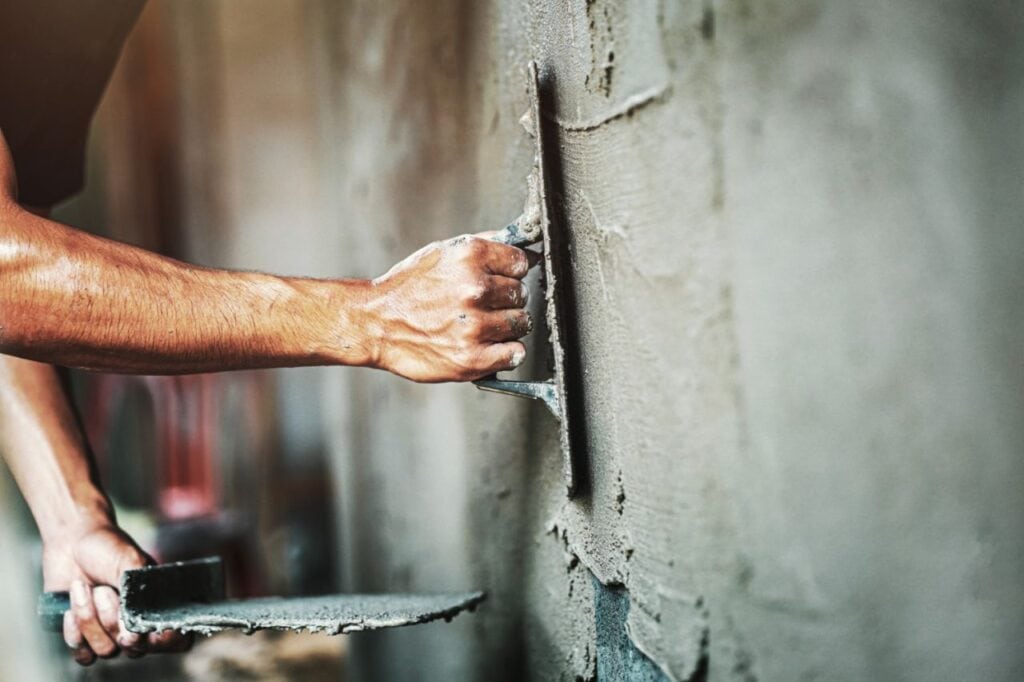
Content Summary
- Plastering trowels are essential tools for professionals and DIY enthusiasts in the plastering industry.
- Understanding the different types of plastering trowels available is important for making an informed purchase.
- Plastering trowels are rectangular, flat tools used for smoothing and spreading plaster.
- They come in various shapes, sizes, and materials, such as wood, plastic, rubber, and steel.
- Different trowels have specific applications based on the type of plaster and the surface being worked on.
- Pointing trowels are ideal for repairing brickwork and intricate details in masonry.
- Advantages of pointing trowels include their small size, precise application, and lightweight design.
- Disadvantages of pointing trowels include limited coverage and time-consuming plastering.
- Finishing trowels are used to smooth and level the surface of plaster.
- They come in flexible or rigid blade options and are available in sizes ranging from 8 to 14 inches.
- Advantages of finishing trowels include achieving a smooth finish and versatility in plaster repairs.
- Disadvantages of finishing trowels include limitations on rough surfaces and the potential need for more skill.
- Window trowels are useful for plastering in narrow areas, particularly around windows.
- Advantages of window trowels include precise application, easy control, and time-saving capabilities.
- Disadvantages of window trowels include limited use for small areas and the requirement of skill for a smooth finish.
- Gauging trowels are essential for accurately measuring and mixing small amounts of plaster.
- Advantages of gauging trowels include accurate mixing, lightweight design, and versatility.
- Disadvantages of gauging trowels include limited use for small increments and the requirement of skill for consistent mixing.
- Corner trowels are specifically designed for plastering corners and hard-to-reach areas.
- Advantages of corner trowels include easy use, time-saving benefits, and achieving a professional finish.
- Disadvantages of corner trowels include limited use for flat surfaces and the need for skill to achieve a smooth finish.
- Bucket trowels are useful for applying plaster from a bucket and mixing materials.
- Advantages of bucket trowels include efficiency, versatility, and easy cleaning.
- Disadvantages of bucket trowels include heaviness when filled with plaster and limitations in reaching high or inaccessible areas.
- The size of trowels impacts control, speed, and pressure during plastering.
- A 14-inch plastering trowel is a good middle ground for providing control and applying an adequate amount of plaster.
- Longer trowels require more force and finesse, while shorter trowels offer better command and consistency on vertical surfaces.
- Choosing the right trowel size is crucial for achieving the desired plastering results.
FAQS About Plastering Trowels
While a pointing trowel can be used for finishing plasterwork, there are better tools for the job. Finishing trowels are better suited for this task as they have a wider surface area and a smoother edge, allowing for smoother and more even coverage.
For small plastering jobs, you can use a trowel with a blade size of 4-5 inches. This size of the trowel is ideal for spreading and smoothing plaster on small surfaces.
Yes, you can use a pool trowel for outdoor plastering. Pool trowels are designed for finishing and smoothing concrete surfaces so that they can also be used for outdoor plastering. However, choosing the right size and shape of pool trowel for the job is important to ensure that you get the best results.
To keep your plastering trowels in good condition, it is important to clean them after each use and store them in a dry, cool place. You can use a wire brush or sandpaper to remove any dried plaster or debris from the blade, and you can also oil the blade to prevent rust.
Yes, a bucket trowel can be used for mixing plaster. Its wide, flat blade is perfect for scooping and mixing plaster in a bucket. However, you should refrain from using a bucket trowel for applying plaster, as its shape needs to be better suited for this task.






